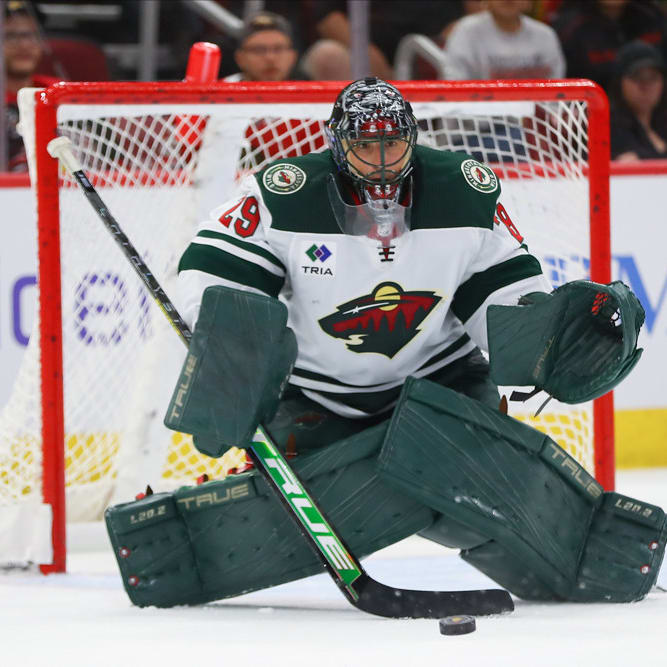This article is part of our From the Press Box series.
Today, From the Pressbox:
The Art of the Deal - Today, we look at trading in your hockey pool. What kinds of traders are there? Then we look at the anatomy of a trade between Anaheim and Toronto - what are the implications? What did you learn from your trade experience?
As we have now reached the 20-game mark for most NHL clubs, we are at a point in our fantasy pools where we should be able to identify areas where our teams could use some depth or need an upgrade because some of our players have fallen short of expectations. The alternative, if you can't find what you are looking for on the waiver wire or your free agency pool of players, is to trade with other teams. Talking trade with fellow pool owners is one of the more fun elements of fantasy pools, in my opinion.
That, in itself, is a potential pitfall that the focused pool owner must be wary of before engaging in talks. You need to have a plan to execute what would be most beneficial for your team.
There are generally two types of traders. One is the owner who is looking to win this trade, without regard to the way it will impact his roster. This is not necessarily a bad thing if you happen to ultimately win big in a deal. Let's see how this owner might operate.
Say, for example, you are the win-this-trade owner, looking for a top scoring defenseman
Today, From the Pressbox:
The Art of the Deal - Today, we look at trading in your hockey pool. What kinds of traders are there? Then we look at the anatomy of a trade between Anaheim and Toronto - what are the implications? What did you learn from your trade experience?
As we have now reached the 20-game mark for most NHL clubs, we are at a point in our fantasy pools where we should be able to identify areas where our teams could use some depth or need an upgrade because some of our players have fallen short of expectations. The alternative, if you can't find what you are looking for on the waiver wire or your free agency pool of players, is to trade with other teams. Talking trade with fellow pool owners is one of the more fun elements of fantasy pools, in my opinion.
That, in itself, is a potential pitfall that the focused pool owner must be wary of before engaging in talks. You need to have a plan to execute what would be most beneficial for your team.
There are generally two types of traders. One is the owner who is looking to win this trade, without regard to the way it will impact his roster. This is not necessarily a bad thing if you happen to ultimately win big in a deal. Let's see how this owner might operate.
Say, for example, you are the win-this-trade owner, looking for a top scoring defenseman like Kris Letang. A shrewd owner would love to have his scoring potential and you may offer you a player like Ryan Getzlaf, a well-regarded scoring center, in return.
If you make this deal, you are likely in a win-this-trade position because center is usually the position where the league depth (in terms of real, interchangeable quality is the greatest) and you may find a suitable replacement for Getzlaf by choosing someone from your free agency pool of players. If this works for you, at the end of the deal, you may be better off than when you started.
The second type of trader is the one who has a similar scenario but looks at the impact on his roster. Is he filing a need in one area and creating a need elsewhere? This second type of owner may also want Letang but Getzlaf may be his best center by a wide margin. If that's the case, in a 12-team league for example, you should be concerned that a replacement may not be of the similar quality of a top-10 center like Getzlaf. In this case, the owner with a better sense of his own roster's strengths and weaknesses should try to deal away a player from a position where he has more depth, so it doesn't create a need elsewhere and require another trade to fix that subsequent need.
In a third scenario, you may be willing to deal Alexander Steen, who is off to a career-best start. Wary of the likelihood that he continues at that pace, you might offer him up in exchange for Sidney Crosby, a player with a more proven track record, though they are quite comparable at the moment. This is the classic buy low, sell high model.
With this trade, you are looking at track records, as a part of the trade. If you are concerned about a player's ability to keep scoring at his career pace, you should covet Crosby more. Steen has never scored at his current pace in any of his eight prior NHL seasons.
My advice in these cases is that you try to be aware of the impact of a trade, with respect to the rest of your roster and that you not be swayed by the unusually hot player, favoring instead the one with the proven track record.
The recent minor trade between Anaheim and Toronto - an illustration.
Last week, we saw a minor transaction in the NHL, which could turn out to be beneficial to both teams. The Maple Leafs, decimated by injuries and a suspension to their top three centers (Tyler Bozak, Dave Bolland and Nazem Kadri) have been actively trying to fill in with some sort of quality addition at their center position by talking trade with other teams.
It turned out that they found a willing partner in the Anaheim Ducks. Now, with such an obvious need, it was likely that many other teams were offering little in the way of real quality or potential to see if they could wrangle a lopsided deal out of Leafs GM David Nonis. Such a move could very likely have left his club with a need to fill in some other roster spot if he acted out of desperation.
So what did Nonis do and how did this play out? DavId Nonis has carved out a reputation as a careful and thoughtful GM and not as a wheeler-dealer. He looked at his organizational depth and determined that defense was a position where the Leafs had the most, in terms of quality and quantity, which he could use as his bargaining chips.
On the other side of this transaction, the Ducks GM Bob Murray looked at his own organizational depth and concluded that, while Anaheim has plenty of offensive depth among their centers, they are deficient along the blueline. Murray, a fellow who has been around hockey for 36 years, looked at this deal to also deal from his position of strength and subsequently upgraded an area of relative weakness.
So, in the end he included Jesse Blacker, a 22-year old former second-round draft pick (2009), a conditional third-round draft pick and a seventh-round pick (which Anaheim originally sent to the Leafs in a prior deal). In exchange, the Leafs did manage to acquire Peter Holland, also 22, a former first-round pick in that same 2009 draft, along with Brad Staubitz, a 29- year old enforcer, whom they immediately shipped to their Toronto AHL affiliate.
Implications of the deal
At the end of the deal both GMs likely felt really good about the outcome. The Ducks improved their blueline depth and unloaded an unwanted contract (Staubitz), without overly compromising themselves elsewhere. Anaheim is hoping that Blacker shows them that he is a hard-nosed defender, whose best style of play revolves around his combativeness and physical defensive zone coverage, with some offensive upside to boot.
The Leafs, the wealthiest franchise in the league, can more easily absorb a "bad" contract and found a way to temporarily plug a skilled offensive player into their more urgent, albeit temporary, need at center. In Holland, the Leafs have picked up a player who has been a top scorer in Junior and AHL hockey, but has never been given a real shot at a scoring line role in the NHL. He will get that chance immediately and will, minimally provide greater organizational depth at center in the future.
The risks of the deal
Given that both Holland and Blacker are both only 22 years old and were both (recently) former high draft picks, it's obvious that their respective organizations chose them because of easily identifiable quality and skills. At such an early time in their careers, both of these clubs may be perceived to be giving up on their players, in the hope that the new arrivals might flourish with this opportunity.
That's a risk that both GMs were willing to make and the big payoff will go to whichever team awakens and causes their new acquisitions to reach their potential. Until that time, this deal looks like a "win-win" scenario at the outset and that's the way most GMs would like any trade to look.
Learn from the experience
After completing a trade, and looking at the outcome some time later, an NHL GM and a fantasy owner will surely know whether they won or lost a trade. If they won, or even got fair value in a thoughtful, respectable process they might be more willing to go back to that rival GM or fantasy owner. If they were misled, taken advantage of, and ultimately lost badly in a trade, that same GM or fantasy owner might be less likely to do repeat business.
Be aware of your conduct in trade negotiations because you should want to keep all your options open, by being perceived as fair and not as a high pressure, "cutthroat" operator. That behavior may ultimately limit your options.










